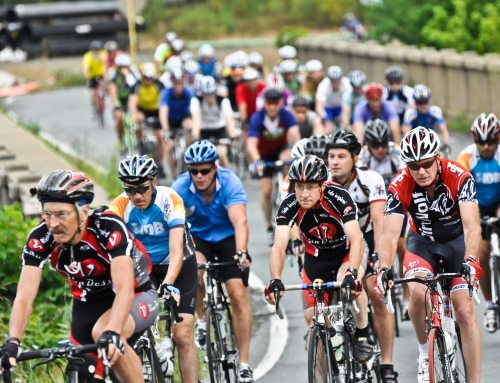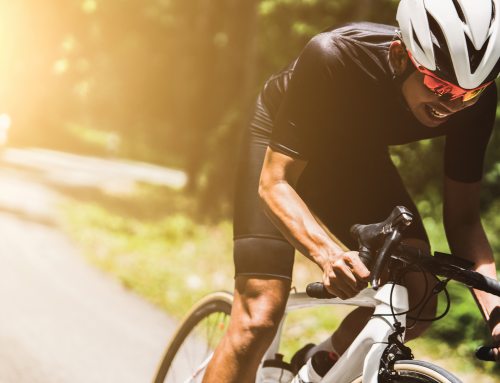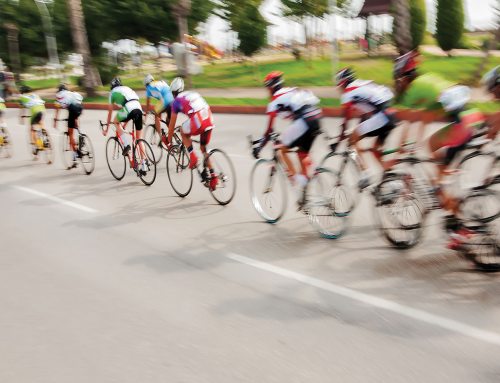By Kevan Mellendick, MS, RD, LDN, CSCS and Sara Himmelrich, MS, RD, LDN
The American Diabetes Association’s annual NC Tour de Cure fundraising cycling event is a two-day ride that travels from Cary down Old US 1 through famous horse country to the town of Southern Pines, a neighbor to Pinehurst.
Safety is paramount – from the roads you travel to the health concerns that you face in endurance sports – when entering into a ride that spans over 200 miles. And for diabetic athletes, safety plays an even larger role in successfully crossing the finish line, specifically because of the medications taken that can lower your blood glucose and cause hypoglycemic attacks. So, here are a few tips for riding as or with a Red Rider, a Tour de Cure participant with Type 1 or Type 2 diabetes.
Preparing for a ride:
- Be sure to tell those that you are riding with that you have diabetes and will be need to stop occasionally to monitor your blood sugars and take in nutrition.
- Always check your blood glucose levels right before the ride. Ideally, your blood glucose should be between 100-250 mg/dL when the ride begins. If you are close to 100 mg/dL, it is important to eat more carbohydrates earlier in the ride; if closer to 250 mg/dL, you can eat fewer carbohydrates.
- If blood glucose is less than 100 mg/dL, take in about 15 grams of carbohydrates (a GoMacro bar or 8 ounces of Powerade will do), wait 10 minutes, then recheck (repeat as needed). If your blood glucose is greater than 250 mg/dL right before the ride, you may want to ride easy for 15-30 minutes, recheck, and then hit your pace once you are within your ideal range.
Signs of hypoglycemia:
- Headaches
- Lightheadedness
- Blurred vision
- Confusion
- Slurred speech
- “Bonking” – an inability to ride at the level that the cyclist can normally maintain
How to treat hypoglycemia:
- Always keep a sugary beverage on hand. Powerade or a similar sports drink is ideal because it has multiple sugars that use separate absorption routes, allowing sugar to hit the bloodstream as fast as possible.
- GoMacro bars also have the carbohydrate levels needed to ride safe and prevent hypoglycemia.
Recovering after a ride:
- Always aim for 10-20 grams of protein and 30-80 grams of carbohydrate post-ride, depending on your body size, intensity output, and duration of the ride. So, a 16-ounce Dannon yogurt or 20-ounce chocolate milk would be great after a tough ride.
- Don’t forget that sometimes low blood sugar can happen after the ride is finished due to the exertion of the ride, especially if it’s very long or hard. Be sure to continue to look out for the signs of hypoglycemia into the night, and even the next day.
Red Rider Testimonials:
“The Tour de Cure offers six rest stops along the route, so there are ample opportunities to stop and eat and check blood sugars. There are multiple snacks available at the rest stops, so I never have to worry about not being able to find something I like that will not only fuel me for riding but also keep my blood sugars at safe levels. There are also sugar-free sports drinks available, which can be great if you only want electrolytes and no carbohydrates. Riding in the Tour de Cure is a diabetic cyclist’s dream!” – Diane Huis, Team Cheetah Team Captain, Red Rider
“The Tour de Cure is a humbling and inspiring event which highlights the determination of those who battle the challenges presented by diabetes every day. To see the support that we as diabetics receive from our communities and fellow riders, coupled with the camaraderie and excitement always experienced on a long bike ride, makes this an unforgettable event, and makes me want to come back year after year.” – Thomas Henson, HensonFuerst Team Captain, Red Rider
For more information about the NC Tour de Cure and the Red Rider program, please visit www.nctourdecure.org.






